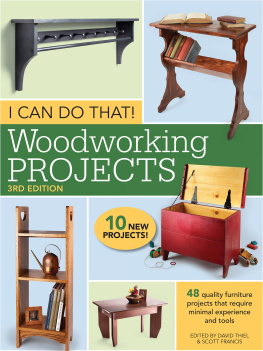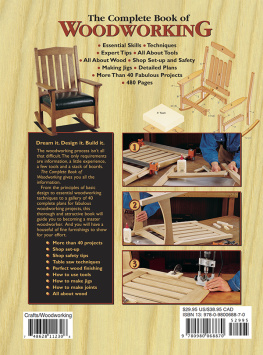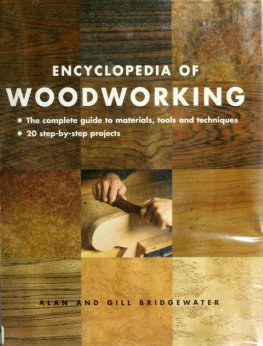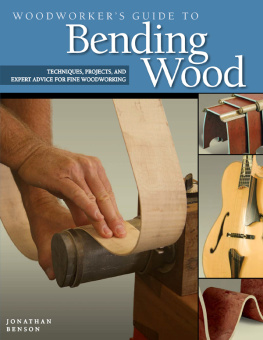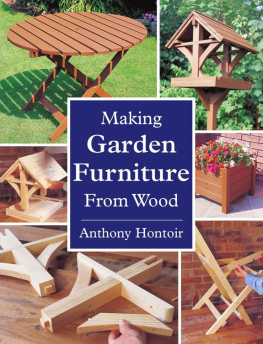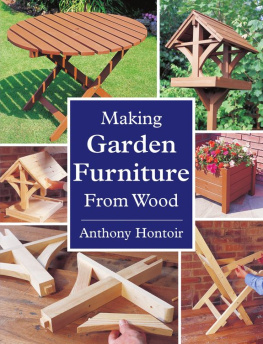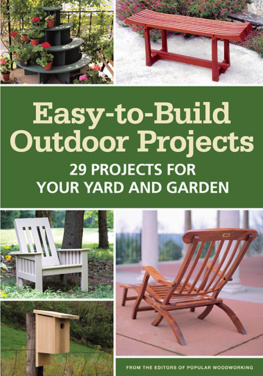Contents
Guide



I dedicate this book to my parents, Albert Parker Hingley and Phyllis M. Hingley.
Special thanks to my wife, Audrey, for assistance with the manuscript and to my son, Robert, for illustration assistance. Also, thanks to the employees of Hingley Furniture Restoration, Inc., especially Bob Lane and Mary Bishop, whose dedication to our craft and clients helped me greatly in the completion of this book.
Brian D. Hingley
Richmond, Virginia

Copyright 2021, 1998 by Brian D. Hingley and Creative Homeowner
Ultimate Guide to Furniture Repair & Refinishing, 2nd Revised Edition is an original work, first published in 2021 by Creative Homeowner, and is a revised and updated edition of Furniture Repair & Refinishing, originally published in 1998 by Creative Homeowner, an imprint of Fox Chapel Publishing.
This book may not be reproduced, either in part or in its entirety, in any form, by any means, without written permission from the publisher, with the exception of brief excerpts for purposes of radio, television, or published review. All rights, including the right of translation, are reserved. Note: Be sure to familiarize yourself with manufacturers instructions for tools, equipment, and materials before beginning a project. Although all possible measures have been taken to ensure the accuracy of the material presented, neither the author nor the publisher is liable in case of misinterpretation of directions, misapplication, or typographical error.
Creative Homeowner is a registered trademark of New Design Originals Corporation.
ULTIMATE GUIDE TO FURNITURE REPAIR & REFINISHING
ORIGINAL EDITION
Editorial Director: Timothy O. Bakke
Art Director: Annie Jeon
Copyeditor: Robin White Goode
Proofreader: Raymond Marchand
Technical Reviewer: R. S. Wilkinson
Graphic Designer: Michelle D. Halko
Illustrators: Rodney Stokes, Paul Schumm, Vincent Allessi
2ND REVISED EDITION
Technical Editor: Jeff Almich
Cover Photography: Freeze Frame Studio [TK check]
Inside Photos: H. Howard Hudgins, Jr., Richmond, VA, except as noted below
Additional Photos: p. : Jim Roberson [TK check all page refs]
Print ISBN 978-1-58011-843-9
eISBN 978-1-58011-843-9
Library of Congress Control Number: 2021940915
We are always looking for talented authors. To submit an idea, please send a brief inquiry to .
Creative Homeowner, www.creativehomeowner.com, is an imprint of New Design Originals Corporation and distributed exclusively in North America by Fox Chapel Publishing Company, Inc., 800-457-9112, 903 Square Street, Mount Joy, PA 17552, and in the United Kingdom by Grantham Book Service, Trent Road, Grantham, Lincolnshire, NG31 7XQ.
SAFETY FIRST
Though all the methods in this book have been tested for safety, it is not possible to overstate the importance of using the safest procedures possible. What follows are reminderssome do and donts of work safety. They are not substitutes for your own common sense.
Always use caution and good judgment when following the repair and refinishing procedures described in this book.
Always be sure that the electrical setup is safe; be sure that no circuit is overloaded and that all power tools and electrical outlets are properly grounded. Use GFCI-protected circuits whenever possible.
Always read container labels on paints, solvents, and other products; provide ventilation, and observe all other warnings.
Always read the tool makers instructions for using a tool.
Always use hold-downs and push sticks whenever possible when working on a table saw. Avoid working short pieces if you can.
Always remove the key from any drill chuck (portable or press) before starting the drill.
Always know the limitations of your tools. Do not try to force them to do what they were not designed to do.
Always make sure that any power-tool adjustment is locked before proceeding.
Always clamp small pieces firmly to a bench or other work surface when using a power tool on them.
Always wear the appropriate rubber or work gloves when handling chemicals.
Always wear a disposable face mask when you create dust by sawing or sanding. Use a special filtering respirator when working with toxic substances and solvents.
Always wear eye protection when using power tools or striking metal on metal.
Always be aware that there is seldom enough time for your bodys reflexes to save you from injury from a power tool in a dangerous situation; everything happens too fast. Be alert!
Always keep your hands away from the business ends of blades, cutters, and bits.
Always hold a circular saw firmly, usually with both hands so that you know where they are.
Never work with tools when you are tired or under the influence of alcohol or drugs.
Never cut very small pieces of wood or pipe using a power saw. Cut small pieces off larger pieces.
Never change a saw blade or a drill or router bit unless the power cord is unplugged.
Never work in insufficient lighting.
Never work while wearing loose clothing, hanging hair, open cuffs, or jewelry.
Never work with dull tools. Have them sharpened, or learn how to sharpen them yourself.
CONTENTS






INTRODUCTION
F urniture restoration has long been a popular pastime for do-it-yourself enthusiasts. During my years of working on furniture, Ive discovered that people with all kinds of backgrounds, from students to homemakers to professional people, have either restored or tried to restore a piece of furniture.
There are myriad reasons for such wide appeal. The reason I hear most often is simply that furniture restoration is enjoyable. Retreating to the sanctuary of a home workshop to work on a furniture project provides not only satisfaction, but relaxation and stress relief. Often your efforts will bring immediate, rewarding results. Theres great personal satisfaction in taking a piece of furniture previously destined for the trash and transforming it into a useful, beautiful piece to grace your home for years to come.


